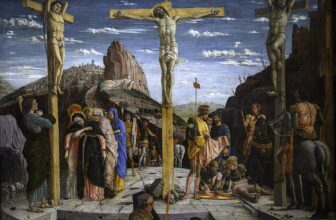
The Creation of Adam
Few works of art have captured the imagination of humanity as profoundly as The Creation of Adam. Painted by Michelangelo Buonarroti between 1508 and 1512, this iconic fresco adorns the ceiling of the Sistine Chapel in Vatican City. Its enduring significance lies not just in its breathtaking artistry but also in its rich symbolism and historical context. Let’s delve into the story behind this masterpiece and explore why it continues to resonate with audiences today.
Historical Context: The Renaissance and Michelangelo’s Vision
The Creation of Adam was commissioned as part of the Sistine Chapel ceiling project by Pope Julius II. This period marked the height of the Italian Renaissance, a cultural rebirth that emphasized humanism, innovation, and the rediscovery of classical antiquity. Michelangelo, already renowned as a sculptor, reluctantly accepted the commission to paint the ceiling, a monumental task that required him to work on scaffolding for years.
At the heart of the fresco lies The Creation of Adam, one of nine panels depicting scenes from the Book of Genesis. This specific scene portrays the biblical moment when God breathes life into Adam, the first man. Michelangelo’s interpretation of this event stands apart for its emotional depth and innovative composition.
Analyzing the Composition: Dynamic Energy and Connection
The composition of The Creation of Adam is both simple and profound. On the left, Adam reclines on the earth, his languid pose suggesting both physical perfection and incompletion. On the right, God, surrounded by a host of angels, reaches out toward Adam with an electrifying gesture. The near-touching fingers of God and Adam, separated by a tiny gap, create a palpable tension, symbolizing the spark of life.
The contrast between the two figures is striking. God is depicted as an active, dynamic force, his flowing robes and muscular form conveying energy and purpose. In contrast, Adam’s relaxed posture reflects his passive state, awaiting the divine touch that will awaken him to consciousness. This interplay of activity and passivity encapsulates the moment of creation with unparalleled emotional power.
Symbolism and Interpretation
The fresco is rich in symbolism, much of which has been debated by scholars for centuries. One of the most intriguing aspects is the shape of the space surrounding God and the angels. Many art historians have noted its resemblance to a human brain, suggesting that Michelangelo, known for his anatomical studies, might have intended to link divine creation with human intellect and consciousness. This interpretation aligns with Renaissance humanism, which celebrated the divine potential within humanity.
The positioning of God and Adam also evokes deeper philosophical themes. The almost-touching hands suggest the delicate balance between the divine and the mortal, the spiritual and the physical. The gap between their fingers has been interpreted as a representation of free will, emphasizing that humanity must actively engage in its relationship with the divine.
The Artistic Legacy
Michelangelo’s Creation of Adam revolutionized the depiction of biblical scenes. Departing from the rigid, hierarchical compositions of medieval art, Michelangelo imbued his figures with vitality and emotion. His masterful use of anatomy, foreshortening, and perspective brought a sense of realism and immediacy to the fresco.
The impact of The Creation of Adam extends far beyond its original context. Its imagery has been endlessly reproduced, parodied, and reinterpreted in popular culture, from advertising campaigns to movie posters. The central motif of the near-touching hands has become a universal symbol of connection, inspiration, and the pursuit of transcendence.
Experiencing the Masterpiece Today
For millions of visitors each year, standing beneath the Sistine Chapel ceiling is a transformative experience. Despite the passage of centuries, The Creation of Adam continues to speak to the human condition. It reminds us of our origins, our potential, and our place within the larger tapestry of existence.
Whether viewed through the lens of faith, art history, or personal reflection, The Creation of Adam remains a testament to Michelangelo’s genius and the enduring power of creativity. It is a work that not only celebrates the act of creation but also invites us to ponder the mysteries of life and our connection to the divine.
Painting Prints for Sale Here Renaissance Prints




